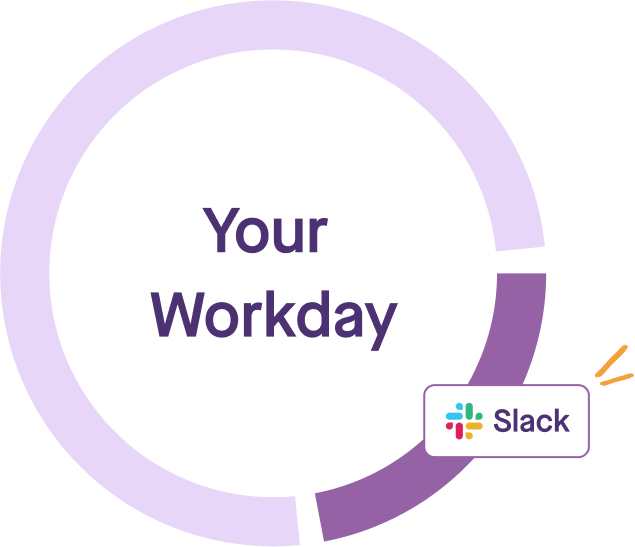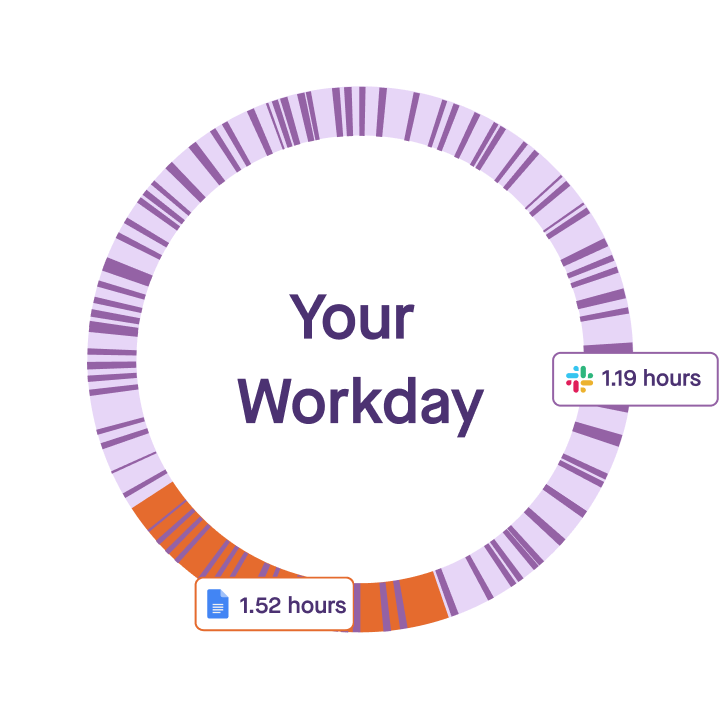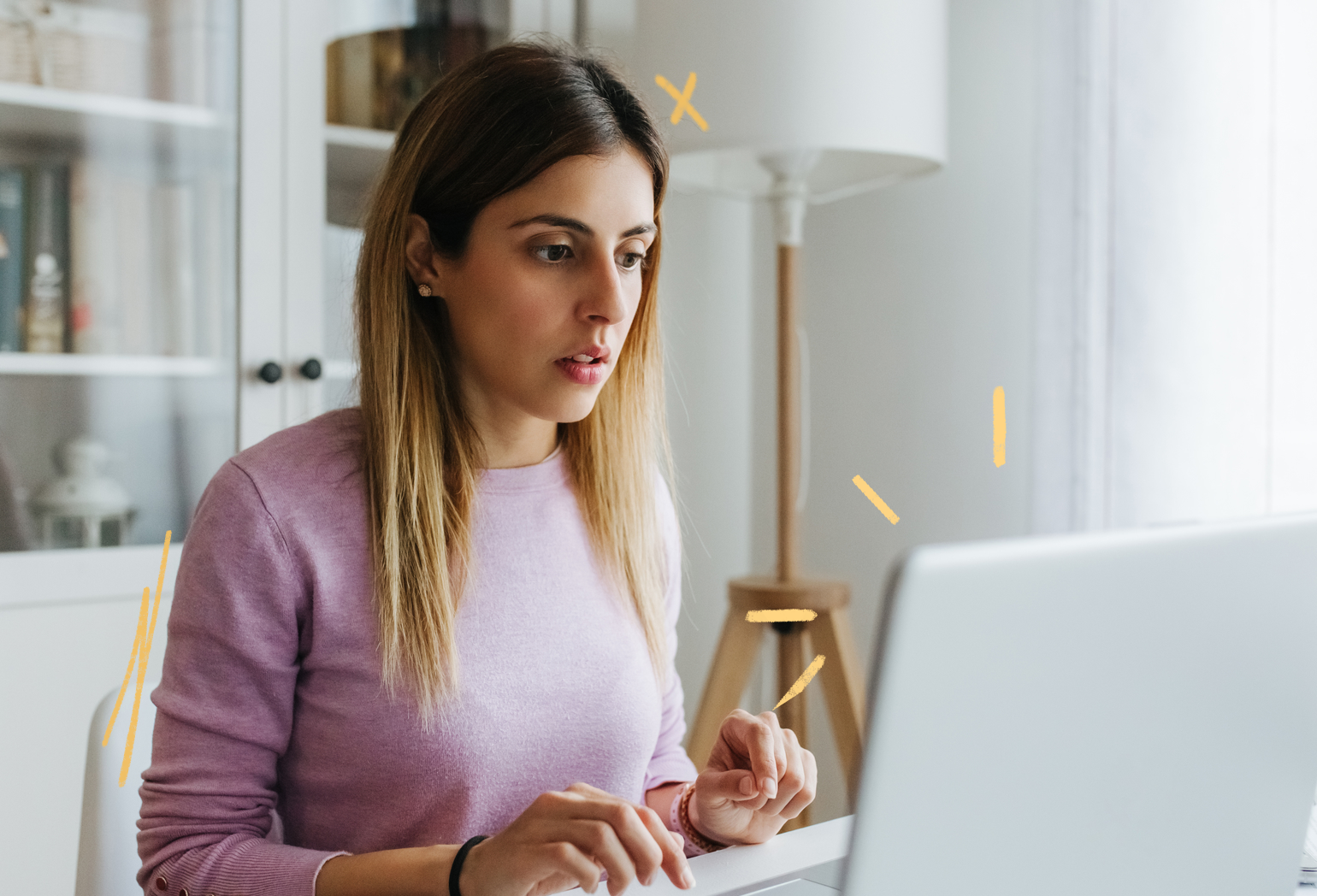Produce8
MSPs looking for the Produce8 Playbook, look no further!
The Dark Side of Slack: Are We Losing Focus by Being Too Active in Slack?
Slack offers an efficient way for teams to collaborate. According to Demand Sage , Slack will have 47.2 million daily active users and 79 million monthly active users by 2025. But while it certainly possesses numerous communication advantages, Slack also poses distractions that impact workplace productivity and focus.

On average, users use Slack for at least 90 minutes during working hours every day, with more than 1.5 billion messages sent daily on Slack.
In a report by Wired , neuroscientist and lecturer Lucas Miller described Slack as a “scary offender” that stops people from getting their work done by keeping them constantly distracted.
Here are some Slack characteristics that may be costing you and your team valuable time in the workday:
1. Constant interruptions
Slack's instant messaging feature often leads to repeated interruptions throughout the workday. The constant influx of messages, notifications, and alerts can break concentration and disrupt workflow. Employees may find themselves frequently switching between tasks , losing valuable time in the process. When we return to work after an interruption, the time it takes to reorient and regain momentum often lands somewhere between 8 to 25 minutes (depending on the complexity of the task). As a result, overall efficiency is compromised.
2. Lack of prioritization
Some had said that Slack replaced the email inbox. But rather, it introduced several more inboxes. With conversations and channels running simultaneously, employees often feel the need to keep up with ongoing discussions and respond promptly. Being pressured to be present online can divert workers’ focus from their main priorities. This pressure leads to reduced cognitive performance, decreased creativity, and a decline in the quality of overall work.
3. Information overload
Slack’s convenience can sometimes be a double-edged sword. The sheer volume of content can quickly overwhelm employees, blurring the line between informational and important. It becomes challenging to filter through the noise and make effective decisions. This causes organizations to add logistics and constantly reshare information they’ve already posted. Consequently, employees need to keep an eye on everything or risk missing details, which ultimately increases their workday stress.
4. Loss of deep work opportunities
Deep work refers to our ability to focus on cognitively demanding tasks without distraction. Slack's constant interruptions can significantly hinder the opportunity for deep work . This can hamper innovation, problem-solving, and the ability to deliver high-quality output.
How to study Slack distractions
So, how bad is Slack distraction in your workplace?
To answer that question, you must analyze your workday, narrow in on Slack, and ask:
- How much is Slack helping our team communicate and how much is it distracting us?
- Are we able to stay focused during deep work and video calls? Or are we jumping from our work tools to Slack when we should be concentrating?
At Produce8 , we answer these questions and take action. Let’s say most of my deep work happens when I’m developing content in Google Docs. The longer I’m in that app, the more I’m getting done. So, I want to put Google Docs side-by-side with Slack and examine the time and interactions between them.

Here is where the magic of a tool like Produce8 comes into place: On this observed day, a Wednesday, my Slack interactions can be viewed in three work blocks.
8 a.m. - 12 p.m.: I started the morning in Slack collaborating with the team. Then I took a break from it and managed to get over an hour of work done.
12 p.m. - 2 p.m.: After lunch, I planned to get back into the task. But 30 minutes in—around 1 p.m.—Slack interrupted and pulled me away from my writing.
2 p.m. - 4 p.m.: For the remainder of the afternoon, I was in and out of Slack, unable to get back into the flow.

During this eight-hour workday, I spent 1.52 hours in Google Docs and 1.19 in Slack. My 153 interactions in Slack can all be interpreted as little cuts into my focus throughout the day.

Some of these engagements were meaningful collaborations. Every time I checked a Slack notification and responded, I was being a good teammate. Slack is great for this purpose. But the problem is that each time I disconnect from my task to check Slack, I’m no longer participating in deep work.
On this day, I only spent 30 more minutes in Google Docs than I did in Slack. Over a week, this can result in nearly a full workday in Slack instead of the app I should be working in.
This is just one example, but it’s easy for it to become a pattern. And this is where Produce8 can help me take action. If the pattern continues, I can schedule my most important tasks between 9:30 - 11 a.m. to ensure I prioritize them during my optimal time. Alternatively, I can share my data and let my team know that I’ll be unavailable on Slack in the afternoon while I’m getting work done.
How to experiment with Slack and regain focus
Slack is an essential tool for all teams. However, we need to learn how to use it properly so it doesn’t overtake our workday. We only have so many hours at work to make a difference and the time we waste on Slack cuts into those hours.
It is more than possible to mitigate Slack’s negative effects. Some common approaches include turning off notifications, adding status indicators, and working asynchronously . However, every worker and every team is different, so there isn’t a one-size-fits-all solution.
What we need more than anything is proper visibility into our work patterns and app usage. We must find a balance between collaboration and concentration that works for our entire company. And to do that, we must study how we work.
A great way to understand how Slack is affecting your workday is to use a digital work analytics platform like Produce8. You can sign up for free, connect your messaging apps (like Slack and Teams) and your most productive tools and start analyzing how they do or do not benefit one another. Experiment with different features, working styles, and productivity hacks, and use real-time data to help measure impact.
Want to see what other tools might be getting in the way of your productivity? Try Produce8 for free or schedule a demo .
Related Aritcles
Digital Work Analytics reporting
AIRO Part 4 - From Reactive IT to Managed AI - The Next Evolution for MSPs
2 min read
Unlock great workdays
Wether you are collaborating with your team or solo tackling your day we can help you recover the most valuable asset, time.
